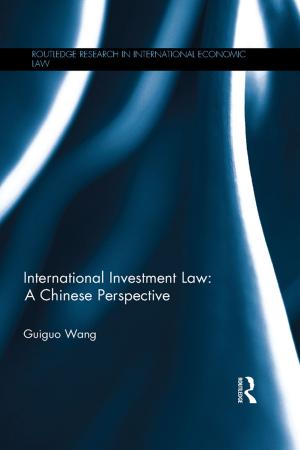Transitions from Education to Work
Workforce Ready Challenges in the Asia Pacific
Business & Finance, Business Reference, Education, Human Resources & Personnel Management| Author: | ISBN: | 9781315533957 | |
| Publisher: | Taylor and Francis | Publication: | November 22, 2017 |
| Imprint: | Routledge | Language: | English |
| Author: | |
| ISBN: | 9781315533957 |
| Publisher: | Taylor and Francis |
| Publication: | November 22, 2017 |
| Imprint: | Routledge |
| Language: | English |
Labour markets are becoming more dynamic in response to pressures from globalisation, new technologies and trade agreements, as well as cross-border migration, inter-generation differences, changing education imperatives and employer expectations. By focusing on several Asia Pacific countries, this book explores the differences in their workforces: ageing, or abundant in labour but lacking in skilled employees. One similarity these countries share is the difficulty in attracting and retaining employees with the required skillset and capabilities, and these constraints can stymie national economic growth and long term development.
This book brings together national and international perspectives on employability challenges faced by selected countries in the Asia Pacific region. While the region is forecast to enjoy high growth in the coming decade, a recurring challenge is addressing skill shortages and ensuring effective transition from training colleges and universities into employment. Consequently, the book focuses on the roles of multiple stakeholders, primarily: governments, education providers and employers – in more effectively addressing these key socio-economic challenges.
Labour markets are becoming more dynamic in response to pressures from globalisation, new technologies and trade agreements, as well as cross-border migration, inter-generation differences, changing education imperatives and employer expectations. By focusing on several Asia Pacific countries, this book explores the differences in their workforces: ageing, or abundant in labour but lacking in skilled employees. One similarity these countries share is the difficulty in attracting and retaining employees with the required skillset and capabilities, and these constraints can stymie national economic growth and long term development.
This book brings together national and international perspectives on employability challenges faced by selected countries in the Asia Pacific region. While the region is forecast to enjoy high growth in the coming decade, a recurring challenge is addressing skill shortages and ensuring effective transition from training colleges and universities into employment. Consequently, the book focuses on the roles of multiple stakeholders, primarily: governments, education providers and employers – in more effectively addressing these key socio-economic challenges.















